DBcoil CS Complete 100 Hour Service Instructions (Part 1 of 3)
May 2022 orig., July 2022 rev.
Table of Contents
Recommendations and Warnings
Cane Creek recommends only trained suspension technicians perform service on all suspension, using all required tools and following all proper procedures. Anyone without access to the proper equipment or with any concerns on the procedures should defer to an authorized Cane Creek service center for service. Improper service can result in loss of performance or suspension failure. All Cane Creek shocks have pressurized nitrogen and oil, even coil shocks. Follow the service procedures exactly as written to avoid possible injury or harm to the suspension. Always wear eye protection while performing suspension service.
Please dispose of all waste products and materials through proper channels to avoid contamination of the environment.
Any damage or issues resulting from improper service will not be covered by warranty. If you have a shock still in its original warranty period and do not wish to void your warranty, please contact an authorized Cane Creek service center.
These service instructions cover the basic service procedures using standard service kits. If your suspension requires parts beyond standard replacement parts – shaft, damper tubes, end eyes – please consult your authorized Cane Creek service center or contact us at our Cane Creek Support Center.
Service Notes
The DBair CS and Coil CS share many service steps. Additionally, the Standard and Trunnion variants of both models have identical service procedures other than where to clamp the cylinder head. Some images in these instructions may not be identical to the valve body or outer damper tube on the Coil CS, but process is the same for the shock in the image and the shock on your bench.
Additionally, running changes happened throughout the lifespan of the Coil CS. Many of those are addressed in the Technical Service Bulletins below, but always take note of the way the shock is originally built and replicate that during reassembly to maintain the original performance, tune, set up, etc.
8mm Shafts
In 2018, all Coil CS shocks transitioned from 8mm to 9.5mm shafts to be more compatible with modern higher leverage ratio bikes. Factory service support is no longer available for 8mm shafts outside of 9.5mm shaft upgrade kits. If you are interested in maintaining an 8mm shaft on a shock, please consult your authorized Cane Creek service center.
Service Kits
BAD2376 – DBcoil CS Complete Rebuild Kit
If 8mm shaft present, ONE of the following 9.5mm shaft upgrade kits is required (plus any stroke reduction clips needed from full stroke):
BAD1599 – 9.5mm Shaft Assembly – 200x57mm
BAD1600 – 9.5mm Shaft Assembly – 216x63mm
BAD1601 – 9.5mm Shaft Assembly – 222x70mm
BAD2322 – 9.5mm Shaft Assembly – 230x70mm
BAD0356 – 9.5mm Shaft Assembly – 240x76mm
BAD1603 – 9.5mm Shaft Assembly – 267x90mm
Required Cane Creek Tools
DBT018 – DB Seal Head Pin Spanner Wrench
AAD1361-01 – DBCoil/ DBAir – Oil Fill Needle Adapter
DBT016 – DB Gas Fill Needle
AAD0555 – 8mm & 9.5mm Shaft Clamp
AAD0756 – DB Valve Seat Tool
BAD1298 – DBcoil Seal Head Bullet
DBT012 – DB IFP Setting Tool
Additional Tools & Supplies
Allen wrenches – 1.5 & 3mm
Torx wrenches – T20
Sockets – 13mm
Crowfoot wrenches – 1/2″
9.5mm Shaft Bullet
Torque wrenches
Pick
Pin Spanner
Needle Nose Pliers
Strap wrench
Suspension Grease
PolyLube Grease
Motorex 4wt Racing Fork Oil
Vacuum Oil Fill Machine
Nitrogen Fill System
Torque, Loctite, Oil & Nitrogen Specs
Torque & Loctite Chart
| Part | Torque Spec | Loctite Spec |
|---|---|---|
| Shaft Nut | 13.5 Nm | 243 (Blue) |
| Climb Switch Plate Cover | 0.16 Nm | 243 (Blue) |
| Outer Damper Tube | Tight | 263 (Red) |
| Valve Seat | 4.8 Nm | None |
| Climb Switch Screw | 1.2 Nm | 243 (Blue) |
| Oil Seal Head | 15 Nm | None |
Oil Chart
| Oil Location | Oil Type | Oil Amount |
|---|---|---|
| Damper Fill | Motorex 4wt Racing Fork Oil | Fill to 3 Bars |
Nitrogen Chart
| Nitrogen Location | Nitrogen Pressure |
|---|---|
| Valve Body | 11 - 12 Bars |
General Prep







Clean shock. Record tune if desired. Remove hardware. Remove bushings if replacing. Unthread spring preload. Remove spring clip. Remove spring. Note and remove any stroke reduction clips.
TSB018 – DBair CS & DBcoil CS Eyelet Change

Shock Ready for Service

Hardware & Bushing Removed

Backing off Preloader

Preloader Backed Off

Spring Clip Removal

Stroke Reduction Puck

Stroke Reduction Puck Removed
Damper Disassembly


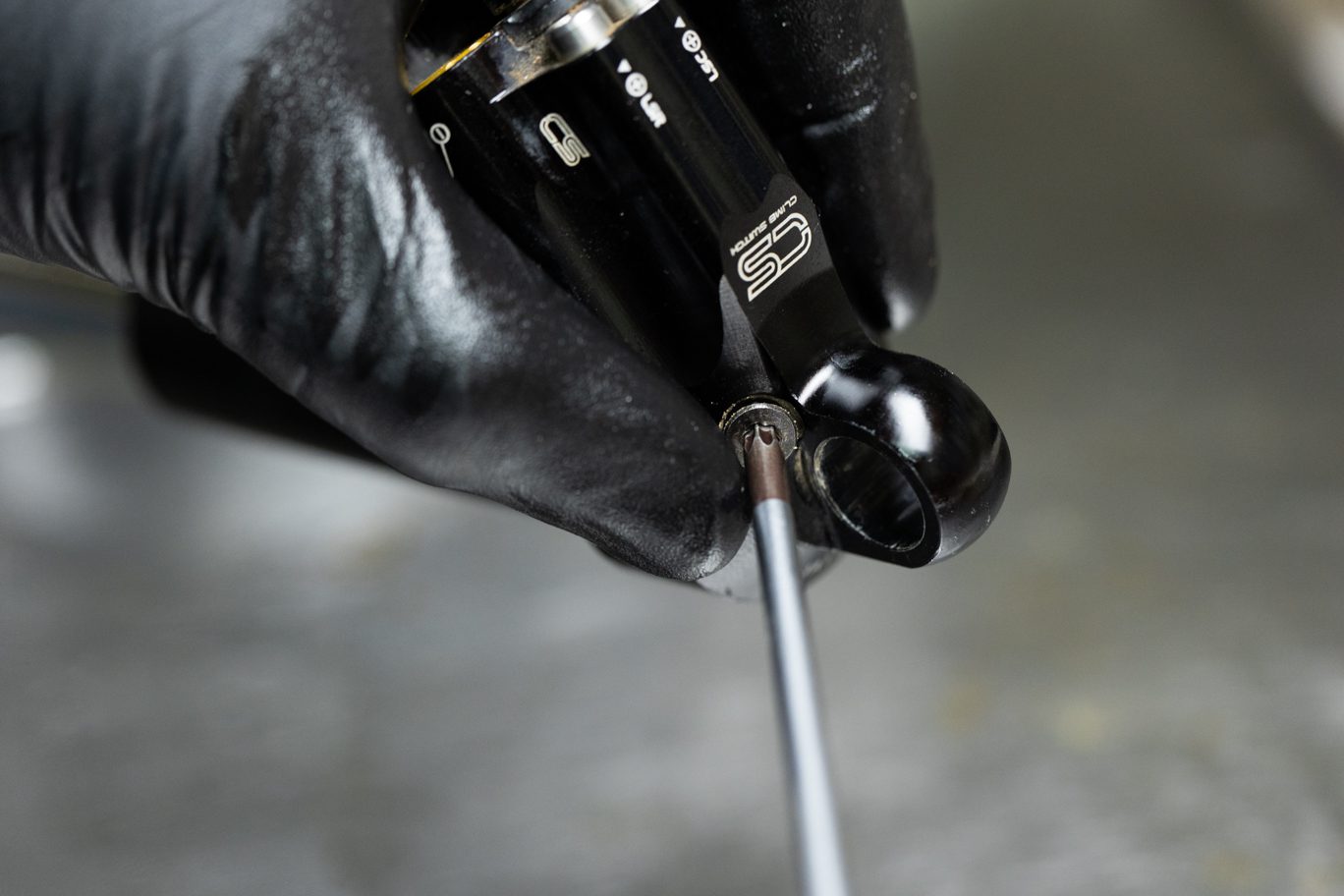


Step 1 – Nitrogen Bleed & Oil Removal
***Use caution as nitrogen is pressurized.***
Using T20, remove gas fill screw and bleed any gas with fill needle. Using T20, remove oil fill screw. Cycle shaft to remove all damper fluid.

Gas Fill Screw Removal

Bleeding Gas

Oil Fill Screw Removal (Standard Body)

Oil Fill Screw Removed (Trunnion)

Cycling Oil From Damper

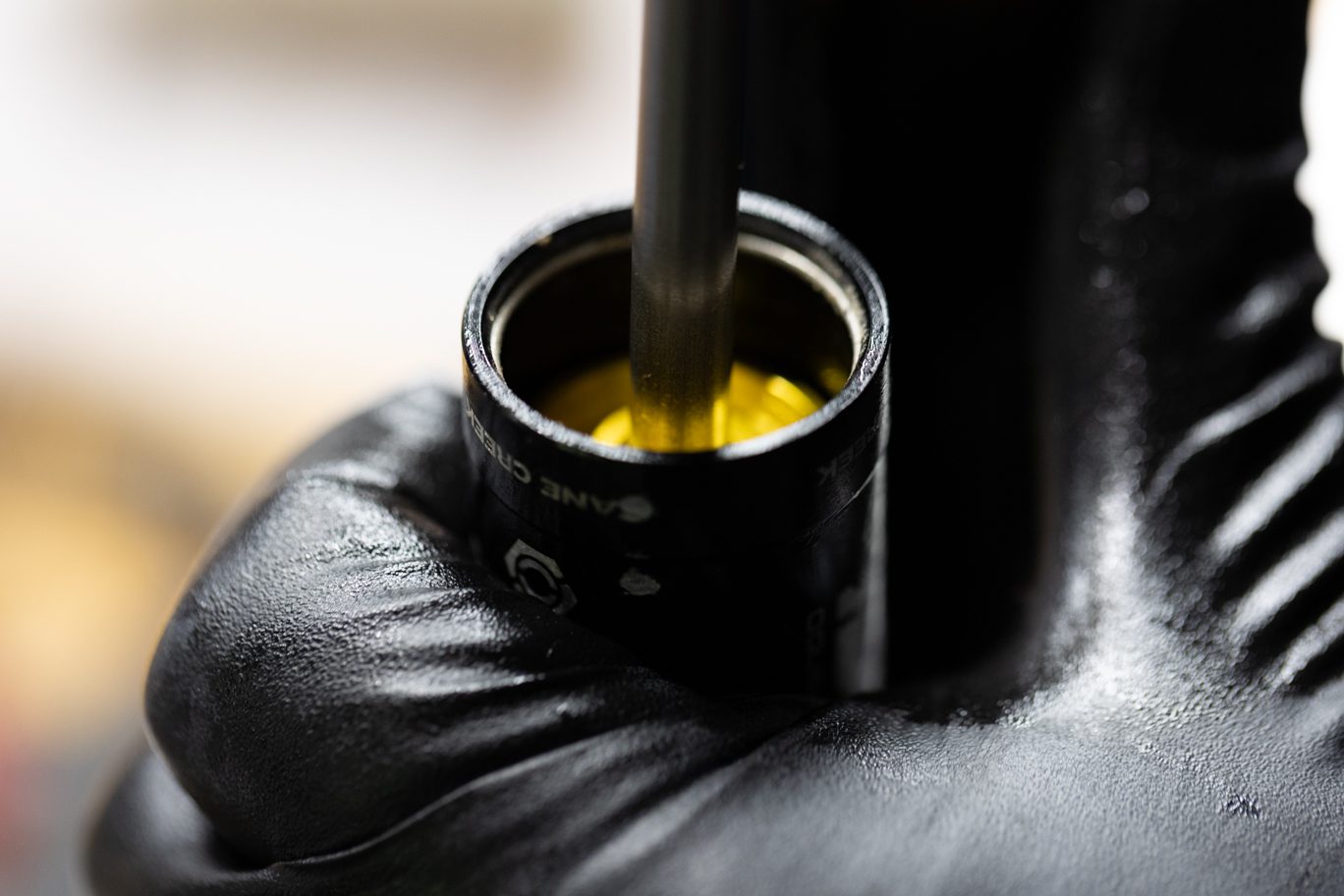

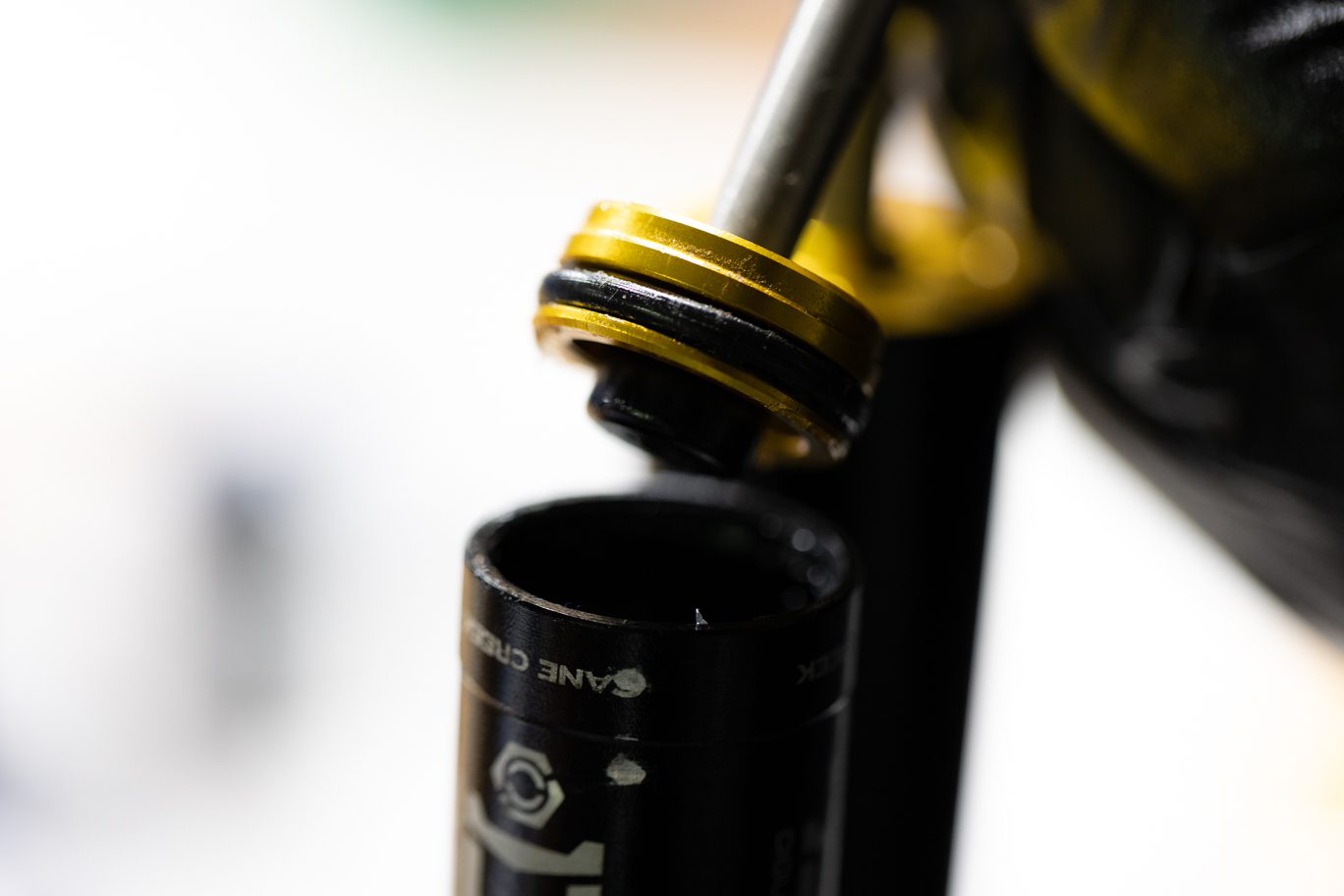


Step 2 – Reservoir End Removal
Depress reservoir end cap to expose circlip. IFP setting tool may be used. Remove reservoir tube circlip. Remove end cap with IFP setting tool (DBT012). Pinch & remove and discard res end o-ring.

Threading IFP Tool into Res End

Depressing Res End

Res End Circlip Removal

Res End Removal

Res End O-Ring Removal 1

Res End O-Ring Removal 2







Step 3 – Oil Seal Head/Shaft Assembly Removal
Using Oil Seal Head tool, unthread oil seal head from outer damper tube. Take care not to use threaded holes on seal head. Remove complete shaft assembly. Using spanner, remove inner damper tube by pulling straight up.

Oil Seal Head, Noting Threaded Holes

Oil Seal Head Removal

Oil Seal Head Unthreaded

Shaft Assembly Removed

Hooking Inner Damper Tube

Inner Damper Tube Removal

Inner Damper Tube Removed
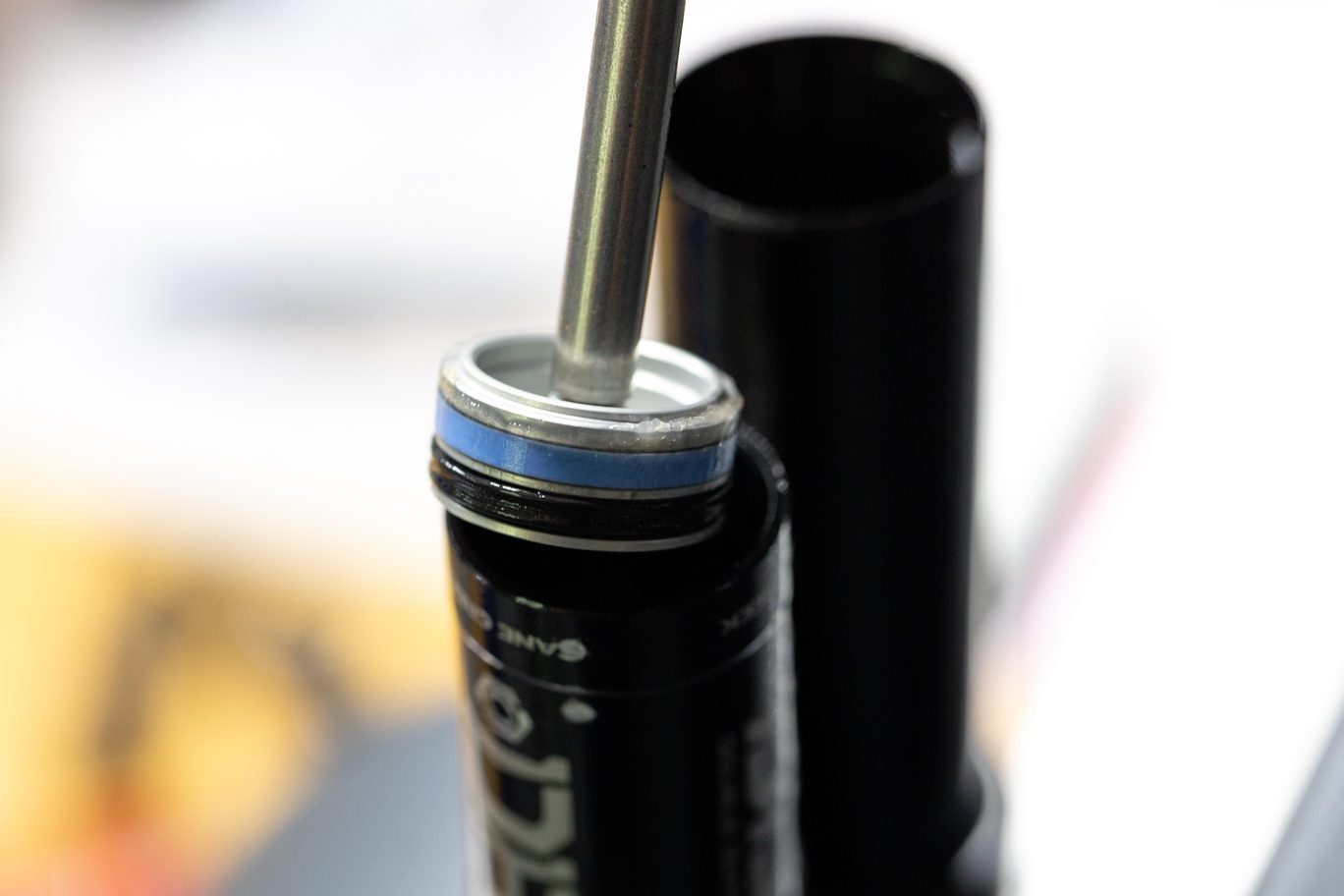




Step 4 – IFP Removal
Using IFP tool, remove the IFP. Pinch & remove and discard IFP quad ring. Remove any remaining oil and thoroughly clean outer damper tube, reservoir tube and cylinder head.

IFP Removal

IFP Removed

IFP Quad Ring Removed

Oil Disposal

Shock Body Cleaning





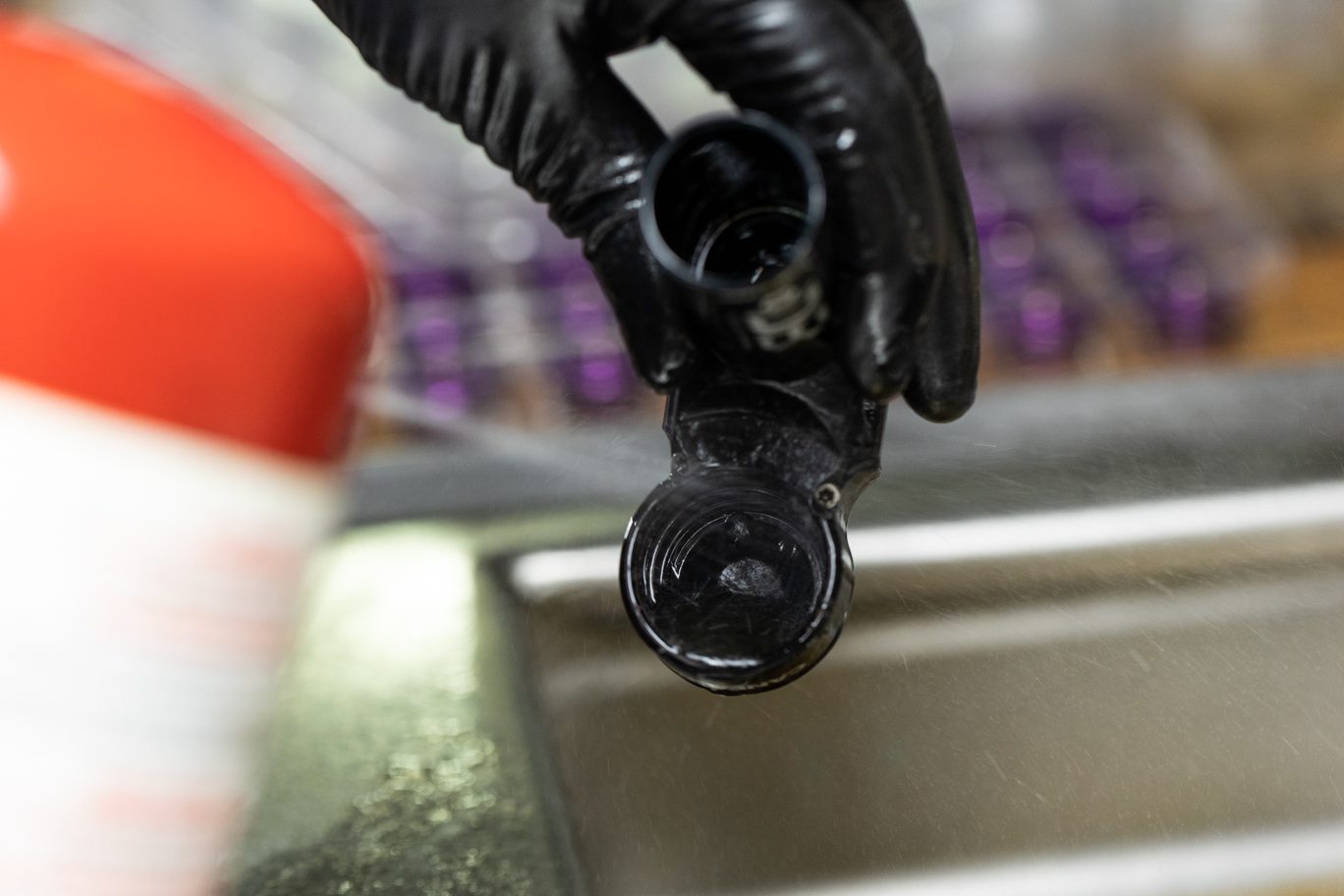
Step 5 – Outer Damper & Res Tube Inspection (Removal if necessary)
Thoroughly inspect damper tube and res tube. Replace if necessary. Test tightness of outer damper tube and reservoir tube. If either comes loose without much force, remove completely. Otherwise, only remove if replacing.
With outer damper tube and/or res tube removed, remove and discard o-rings. Thoroughly clean all Loctite residue from cylinder head threads.

Testing (and Removing if Necessary) Outer Damper Tube

Threads Before Cleaning

Cylinder Head O-Ring Removal 1

Cylinder Head O-Ring Removal 2

Testing (and Removing if Necessary) Res Tube

Cleaning Threads





Step 6 – Climb Switch & CS Cover Removal
Using T10, remove Climb Switch screw and Climb Switch. Using 1.5mm Allen, remove Climb Switch cover plate screws and cover plate.

Climb Switch Screw Removal

Climb Switch Removal

Climb Switch Cover Plate Screw Removal 1

Climb Switch Cover Plate Screw Removal 2

Climb Switch Cover Plate Removal
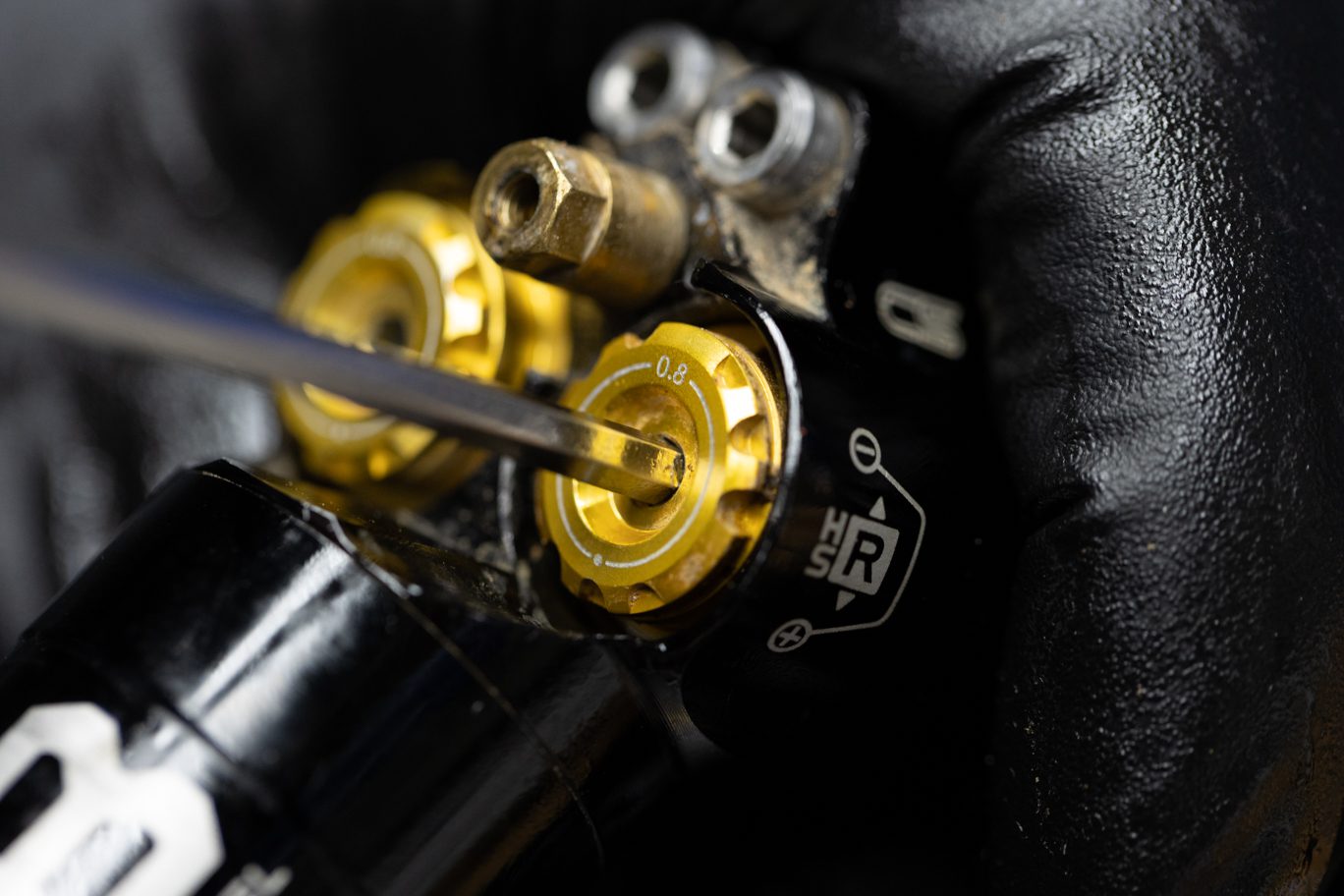
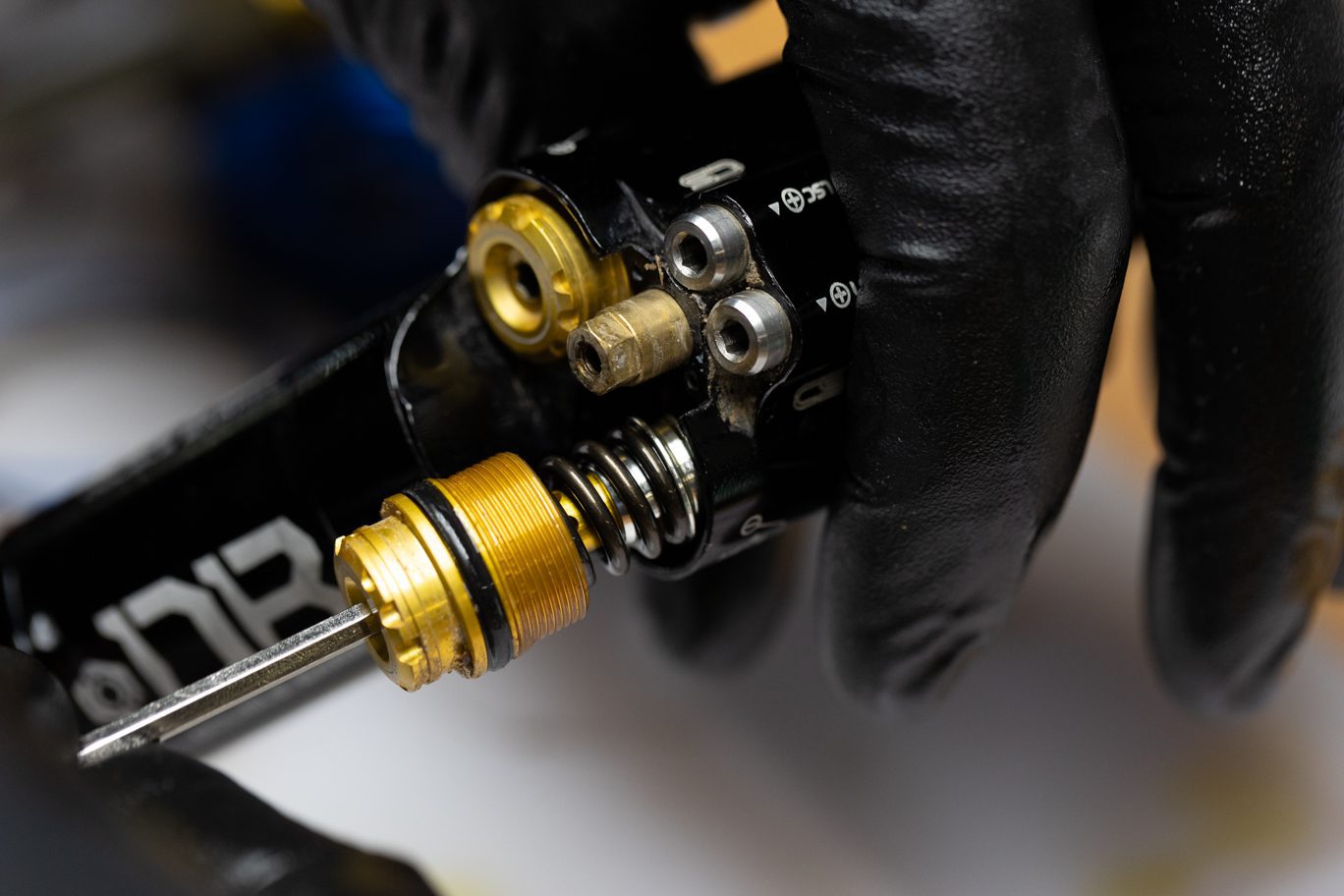



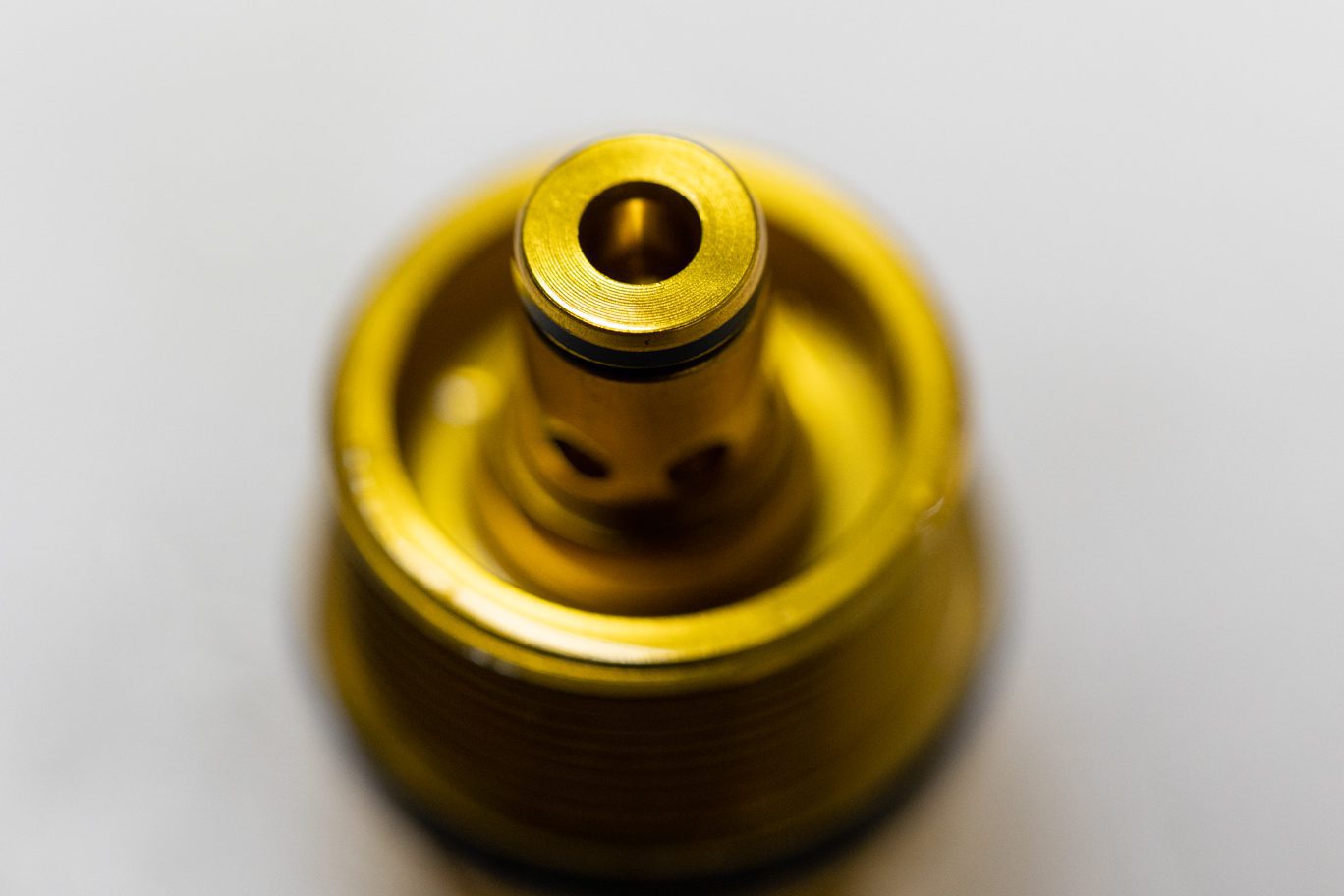
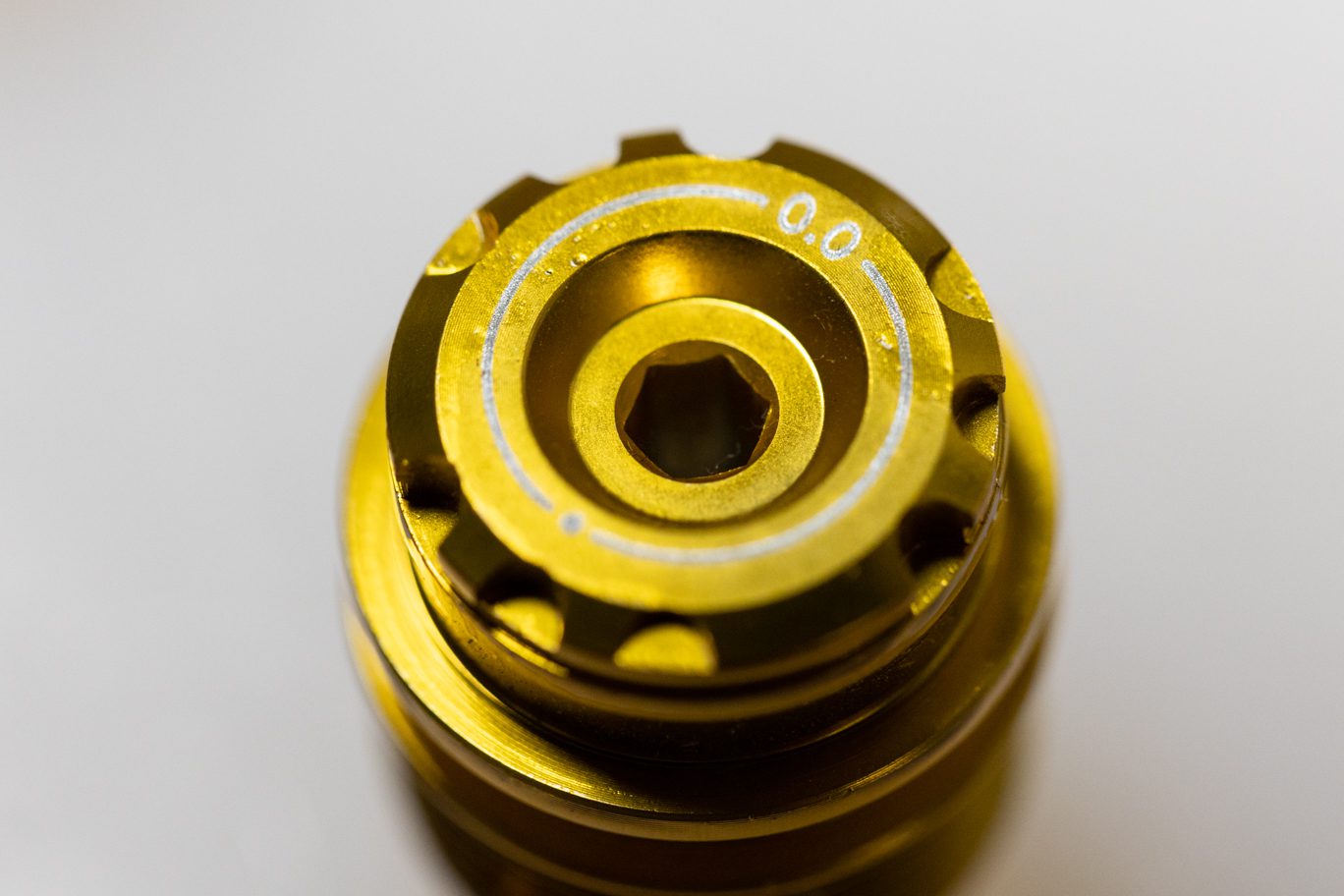


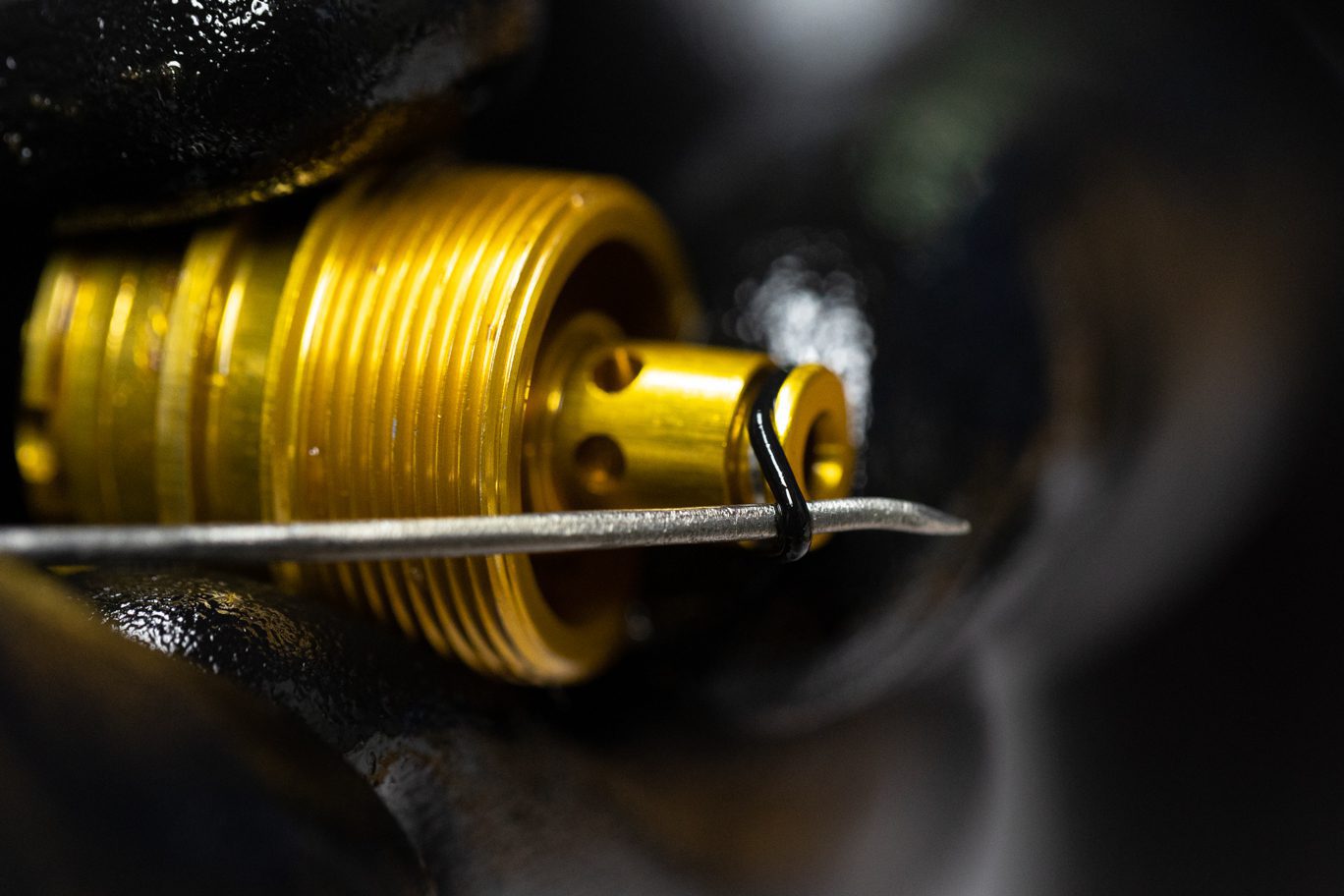
Step 7 – High Speed Adjusters Removal
Using 3mm Allen, remove High Speed adjusters. Take note of the Rebound adjuster (0.8 with port) and spring (red, 30wt weight) and Compression adjuster (will vary from 0.0 without port, to 0.8, 1.0 or 1.2 with port) and spring (yellow, 10wt or standard 20wt). Spring color may have worn off. Pinch & remove and discard High Speed adjuster o-rings.

HSR Adjuster Removal

HSR Adjuster Removed

HSC Adjuster Removed

High Speed Adjusters Removed, Rebound on Right

High Speed Adjuster w/ Port (0.8), Front

High Speed Adjuster w/ Port (0.8), Rear

High Speed Adjuster w/o Port (0.0), Front

High Speed Adjuster w/o Port (0.0), Rear

High Speed Adjuster External O-Ring Removal

High Speed Adjuster Poppet O-Ring Removal


Step 8 – High Speed Valve Seat Check
Using CS Valve Seat tool (AAD0756), check for proper torque (4.8 Nm) on valve seats. No need to remove valve seats as part of a standard service.

Valve Seat Tool

Valve Seat Torque Check






Step 9 – Climb Switch Spool Valve Removal
Using 6mm socket, thread spool valve closed (clockwise) and note location of the indicator dot. Then open (counterclockwise) the valve at least half a turn and then onto indicator dot at the 6:00 position. This is the default setting for reassembly. Make note of this position from fully closed. Unthread and remove spool valve assembly. Pliers may be necessary to remove assembly once completely unthreaded. Remove and discard spool valve o-ring. Remove and clean detent balls and spring.

Spool Valve Properly Clocked Ahead of Removal

CS Spool Valve Removal

CS Spool Valve Removal Past O-Ring w/ Pliers

CS Spool Valve Removed

CS Spool Valve O-Ring Removed

CS Spool Valve Detent Balls & Spring Removed





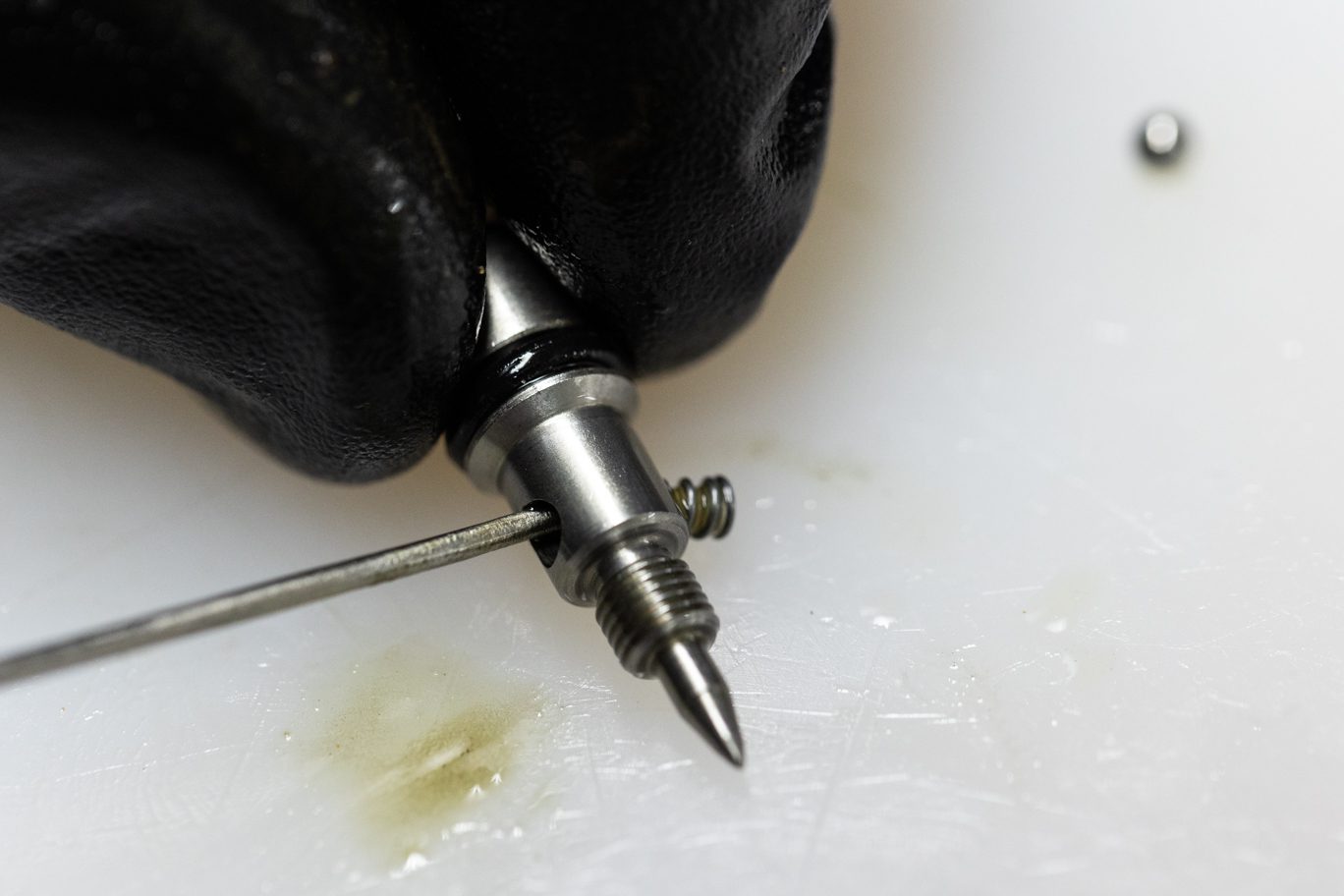

Step 10 – Low Speed Needle Removal
Using 3mm Allen, remove Low Speed needles. Pliers may be necessary to remove assembly once completely unthreaded. Take note of labeling on needles for reinstallation back into same circuit. Remove and clean detent balls and spring. Pinch & remove Low Speed needle o-rings.

Low Speed Rebound Needle Removal 1

Low Speed Rebound Needle Removal 2

Low Speed Compression Needle Removal 1

Low Speed Compression Needle Removal Noting Labeling

Low Speed Compression Needle Removal 2

Low Speed Rebound Needle Detent Balls & Spring Removal

Low Speed Rebound Needle O-Ring Removal
Continue to Part 2
Next
